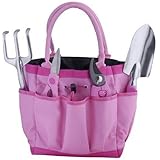
What does your bird garden have to do with conservation?
Amazingly, backyards and city parks are now important natural bird habitats because of the ever-growing human encroachment on open land.
In fact, landscaping with diverse plantings and feeding stations now provide an oasis of resources in the middle of human habitation. This can be a win-win opportunity.
Conservation starts at home. Feeding and watching birds gives families the opportunity to practice conservation right in their own yards.
Children can learn and enjoy the wonders of nature right from their kitchen window. Think of how thrilled they will be watching hatchlings struggle out of their eggs.
In no time at all, they will learn how birds help control the insect population... and, become very curious about what their new friends eat and drink. (Of course, kids are not the only ones...)
How your family can learn about birds... A particularly fun aspect of bird conservation is learning which birds are visiting your backyard habitat. There are several good identification field guides to help you identify the wild birds in your garden... such as National Geographic, Peterson's East & West, and Birds of North America.
Basically, birds are grouped by physical characteristics. It is fairly easy to distinguish a duck from a songbird just by looking at them. Here's a list of a few of the physical characteristics that help identify birds:
Size
Body shape
Colors
Markings
Beak shape
Feet and wing shape in flight
Did you know that birds have a variety of calls? Bird gardeners become good listeners, and can tell the difference between the Black-Capped Chickadee's call (which sounds remarkably like their name... "chickadee") and the American Robin's call ("cheerily - cheerio - cheeriup").
Focus On Birds' Needs
Although the catalog choices may seem overwhelming, it's important to focus on what the birds actually need. They are not as fussy about particular species of plants as we might think. If flowers, shrubbery, or trees provide food, shelter, and cover, the birds will likely check them out. It is the structure of the habitat and the type of food available that are most important.
All those photographs of plants showing red, orange, pink, and purple tubular flowers will be ideal for nectar-feeding hummingbirds with their long bills and extensible tongues. Plants in the daisy, or composite, family are excellent choices for the wildlife garden. The flowers make good landing pads for butterflies, and the seeds provide tasty morsels for finches, buntings, doves, and sparrows. Bunchgrasses produce copious amounts of seeds in addition to offering raw materials for nest building. If you include plants like milkweeds in your plans, birds will use the inner bark and flossy seedheads of last year's plants to line their nests. Don't forget shrubs that produce berries or fruits. Mockingbirds, thrashers, and thrushes will thank you for that. Some plants have berries that persist into winter and can provide spots of color in an otherwise gray landscape.
Cover and shelter for birds can be created using trees and shrubs. Well-placed trees will provide jumping-off points for courtship displays as well as places to feed, perch, sing, and nest. Dense shrubs make perfect hiding places for birds as well as protection from the elements. Plants of different heights offer more choices in this regard and will accommodate different kinds of birds. Trees and shrubs may also yield food, either through their seeds, flowers, or fruits. Birds are more likely to visit your garden if there is an abundance of vegetation in which to hide and feel safe.
Bugs Aren't Bad
Another source of food for birds, of course, is insects. Strangely enough, the pictures in catalogs show no signs whatsoever of the presence of any insects. All of the plants are perfect and unblemished. As bird gardeners, we might actually prefer to see a few signs of insect damage in our plants, for without insects, what are the warblers and flycatchers going to eat? Living with insects takes a certain shift in attitude, but their presence indicates a healthy, well-balanced environment. It is important to remember that most birds eat insects at one time or another. And bear in mind, too, that many insects, such as lacewings and lady beetles, are quite beneficial in the garden because they eat aphids. Then there are the butterflies-those flighty, fancy creatures that we love to see flitting among the flowers. They are insects, too.
Neighborhood bird habitats... From a bird's point of view, a neighborhood of backyards is actually a habitat... theirs. How successful that habitat becomes, depends in no small part on the individual efforts of the neighborhood's gardeners.
So you see, every little thing you and your neighbors do to help these wild birds in your own backyards is really no "little" thing.
Your neighborhood becomes a wild bird habitat, and you have become bird conservationists... not just backyard gardeners!
Susan Nelson Hopkins is an online gardening expert from Carlsbad, NM. She specializes in creating gardens that will attract birds. For more bird gardening information, please visit Susan's Bird Gardens
Saturday, December 4, 2010
Backyard Bird Garden
Posted by
JACK-COM
at
4:39 AM
![]()
Labels: Backyard Garden
Subscribe to:
Post Comments (Atom)
Gardening, organic gardening, home gardening, container gardening, indoor gardening, landscaping' landscaping idea, landscaping design, landscaping tradeshow, homedesign, home interior design
| Allright Reserved Gardening Landscaping | Powered BY B L O G G E R | Design Layout by QQ SAMUDRA |




0 comments:
Post a Comment